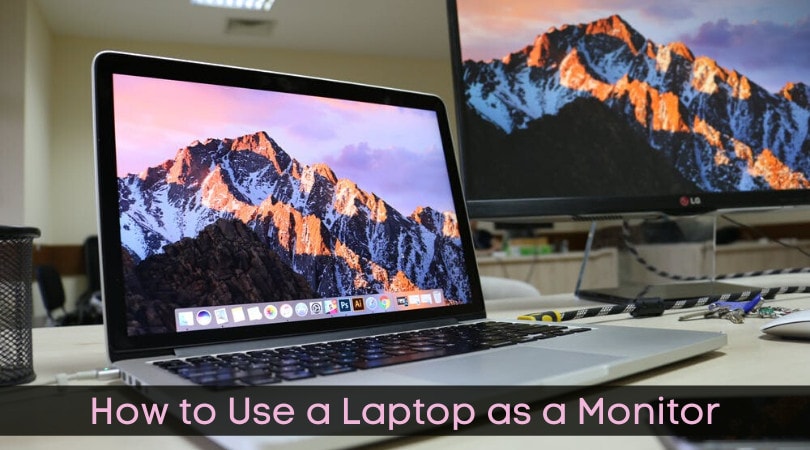Everyone loves laptops and for obvious reasons. Laptops are fun, portable, and easy to use. You can carry them wherever you want to and use them freely without the worry of long cables and other pain points.
However, this is not the only thing to love about laptops. When you are not traveling and would like some additional screen space, your laptop is your perfect companion. How, you ask? You can turn it into a monitor! This will help you multi-task, improve productivity, and work conveniently.
How is that possible though? Can a non-technical person do it or do it require complicated steps?
Well, it’s easy! And, we will tell you exactly how to do it. Read on!
How to use a laptop as a monitor – Windows
We are going to speak about Windows 10 but you can use the same steps for other versions as well. There might be a few minor changes in the steps that will be fairly obvious as you follow them.
You must start off by connecting your laptop to your desktop. You can do this using a cable. After this, head over to your desktop monitor and follow the steps below.
- Go to Properties by right clicking on your desktop.
- From here, navigate to Settings.
- You will be able to see a second screen that you can drag and adjust. Do that so that it is in accordance with the physical setting.
- Now, your computer will ask you if you want to enable this monitor. Select Yes and then Apply.
One important thing here is to enable the Extend my Windows option. Otherwise, you won’t be successful in your quest.
How to choose laptop as a secondary monitor
After following all the steps, you may end up in this unique scenario. Your laptop is actually your primary (main) monitor and your desktop screen is working as the secondary one. There’s no need to panic. You can flip it within seconds by doing the following:
- Select the laptop monitor in the Settings window.
- Choose Use this Device as the Primary Monitor option.
And, done!
You can also avoid having to do this altogether by checking which monitor has been assigned which role. The screen will display numbers (1 for primary and 2 for secondary) when you press Identify. If all’s well, leave it as is. If not, adjust.
How to use a laptop as a monitor – Mac
Mac users, rejoice! The steps are very simple for you. In fact, it won’t take you longer than a couple of minutes if you follow the steps below after connecting your laptop to your iMac.
- Open System Preferences – it should be in your Dock. You can also use the shortcut on your keyboard.
- Click on Displays.
- iOS automatically detects compatible monitors to pair with. So, you should see the option here by default. If it does not, click on Detect Displays.
- Choose the display and then arrange it based on your preference by clicking on Arrangement.
- That’s about it!
Fun tip – you can play around with the Dock and decide which monitor displays it. Pretty cool, huh?
BONUS – Using a laptop as a monitor using Miracast
We all love surprises, which is why we thought we will give you a little extra something before concluding this guide. If your desktop has an in-built Miracast (latest Windows desktops do), you can set it up and use it to connect your laptop as a monitor. Here’s what you should do –
On your laptop
- Go to Settings from the Start menu.
- Choose the System icon.
- On the left, you will see a number of options. Choose Projecting to this PC.
- Change the first setting here to Available Everywhere. You can make changes to the other options as well based on what you need.
On your desktop
- Head over to the Task Bar and click on the Notifications icon.
- Choose the Connect option.
- Your PC will start looking for available devices. If you have set it up correctly, your laptop will show up here.
- Select your laptop to send a connection request.
- Check your laptop and accept this request.
- Now, go to the Display Settings of your PC by right clicking on the desktop.
- The Display menu will open up. This is where you should adjust the appearance. Simply choose Multiple Displays and change this setting to Extend Desktop to this Display.
Done!
As you can see, there are multiple different ways in which you can use your laptop as a monitor. They are all easy and will not take too much of your time. If your laptop is not showing up on the PC (for connection), or if your iMac is not detecting the display, there may be compatibility issues. We recommend that you check this before starting the process.
If everything is fine and you are still unable to connect, there may be an underlying problem that needs professional help. Don’t hesitate to speak to technical support to figure it out.
We hope our guide cleared all your doubts. If you have any questions for us, please comment and let us know. We are always happy to help!
